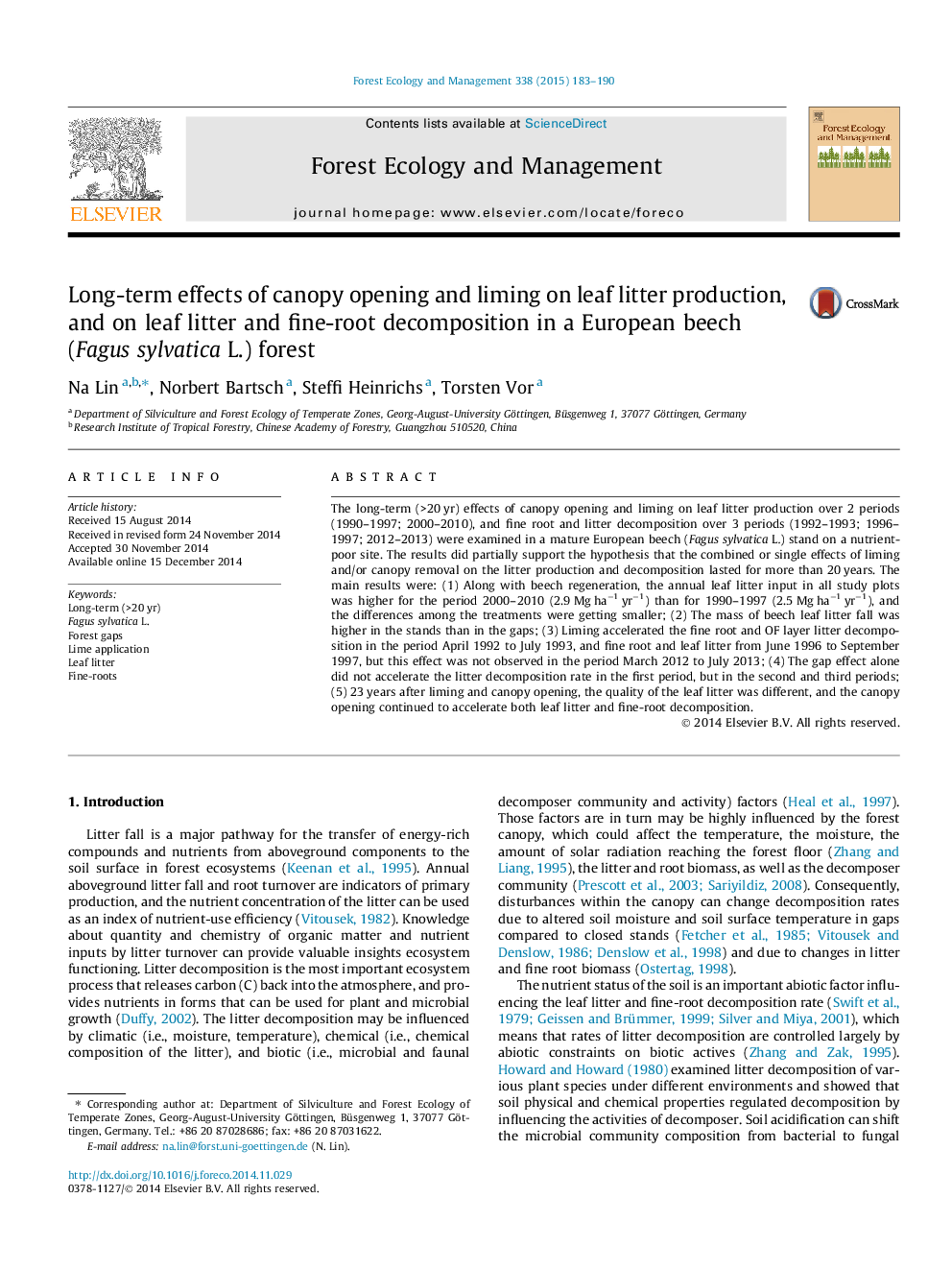| Article ID | Journal | Published Year | Pages | File Type |
|---|---|---|---|---|
| 86391 | Forest Ecology and Management | 2015 | 8 Pages |
•Liming alone enhances the litter input over twenty-three years.•Liming with canopy opening reduce leaf litter more than twenty-three years.•Liming alone reduces the leaf litter and fine root decomposition in the long run.•Gap alone promotes the leaf litter decomposition 23 years after creation.
The long-term (>20 yr) effects of canopy opening and liming on leaf litter production over 2 periods (1990–1997; 2000–2010), and fine root and litter decomposition over 3 periods (1992–1993; 1996–1997; 2012–2013) were examined in a mature European beech (Fagus sylvatica L.) stand on a nutrient-poor site. The results did partially support the hypothesis that the combined or single effects of liming and/or canopy removal on the litter production and decomposition lasted for more than 20 years. The main results were: (1) Along with beech regeneration, the annual leaf litter input in all study plots was higher for the period 2000–2010 (2.9 Mg ha−1 yr−1) than for 1990–1997 (2.5 Mg ha−1 yr−1), and the differences among the treatments were getting smaller; (2) The mass of beech leaf litter fall was higher in the stands than in the gaps; (3) Liming accelerated the fine root and OF layer litter decomposition in the period April 1992 to July 1993, and fine root and leaf litter from June 1996 to September 1997, but this effect was not observed in the period March 2012 to July 2013; (4) The gap effect alone did not accelerate the litter decomposition rate in the first period, but in the second and third periods; (5) 23 years after liming and canopy opening, the quality of the leaf litter was different, and the canopy opening continued to accelerate both leaf litter and fine-root decomposition.
